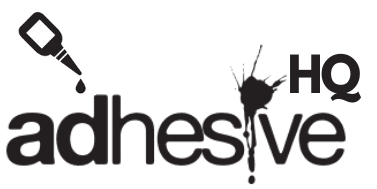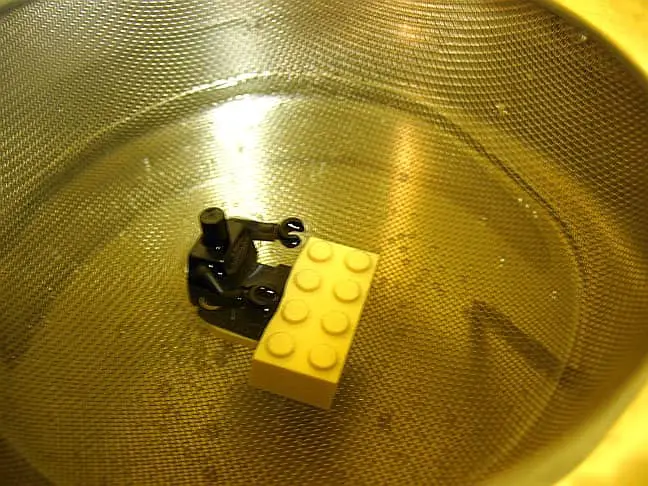How to Remove Adhesive from Wall: Step-by-Step Guide
Removing adhesive from walls can be a challenging and sometimes frustrating task. Whether it’s leftover glue from stickers, double-sided tape, or wallpaper adhesive, these sticky residues can be stubborn and potentially damaging. Luckily, with the right tools and techniques, you can safely remove adhesive from walls without causing any damage to your paint or wall surface.
In this comprehensive guide, we’ll walk you through the best ways to remove adhesive from various wall materials, ensuring a clean, smooth surface ready for redecorating or painting.
Key Takeaways:
- The type of adhesive and wall material affects the removal process.
- Common tools for removal include heat, scrapers, adhesive removers, and rubbing alcohol.
- Adhesive residue must be removed carefully to prevent damage to walls and paint.
Part 1: Understanding Adhesive Types and Wall Surfaces
Why Adhesives Can Be Difficult to Remove from Walls
Adhesives are formulated to stick strongly to surfaces, which makes their removal tricky. Adhesive residue can penetrate the surface, making it hard to clean off completely. Over time, this bond between adhesive and surface strengthens, making it more difficult to remove.
In some cases, adhesives can damage the wall by removing the paint or damaging the surface underneath. Identifying the type of adhesive you’re dealing with is crucial before choosing the best method to remove it. Common adhesives include:
- Glue (such as super glue or craft glue)
- Stickers and decals
- Double-sided tape
- Wallpaper adhesive
Each type has different levels of adhesion, and the method for removing them varies.
Assessing Your Wall Material Before Removal
Before you begin, it’s essential to know what type of wall material you’re working with. Different surfaces will respond to adhesive removal techniques in unique ways. For instance:
- Drywall and painted walls: These surfaces are more fragile, so harsh solvents can damage the paint or wall texture.
- Brick and wood: These porous materials might absorb adhesive residue, making it harder to remove.
- Plaster: A more delicate surface that requires gentle handling to avoid damage.
Always test any adhesive remover or technique in a small, inconspicuous area before applying it to the entire surface. This will prevent unnecessary damage.
Tools and Materials You Will Need
Depending on the type of adhesive and wall surface, you’ll need different tools and materials to remove it safely and effectively. Here’s a list of essential tools:
- Hairdryer or heat gun: Softens adhesive for easy removal.
- Plastic scraper or old credit card: Gently lifts adhesive without scratching.
- Rubbing alcohol or vinegar: Mild solvents that dissolve adhesive residue.
- Adhesive remover (e.g., Goo Gone): Commercially available removers for stubborn adhesives.
- Soapy water and sponge: For final cleaning after adhesive removal.
- Microfiber cloth: For wiping away residue.
- Sandpaper (optional): For removing any remaining stubborn adhesive or surface damage.
Each of these tools has its purpose depending on the adhesive you’re dealing with. Heat guns are ideal for stickers and tape, while rubbing alcohol works well for more delicate surfaces.
Step-by-Step Process for Removing Adhesive from Painted Walls
Now that you’re familiar with the tools, let’s go over a simple process to remove adhesive from painted walls:
- Heat the adhesive: Use a hairdryer or heat gun to soften the adhesive. Hold the heat 6-12 inches away from the wall and move it back and forth over the adhesive.
- Gently scrape: After the adhesive has softened, use a plastic scraper to gently lift it off. Be cautious not to damage the paint underneath.
- Apply rubbing alcohol: For any remaining residue, dampen a cloth with rubbing alcohol or vinegar and rub the adhesive. This should dissolve the residue.
- Wipe and clean: Once all the adhesive is gone, wipe the area clean with a cloth soaked in soapy water to remove any leftover cleaning agents.
Part 2: Specific Methods for Different Adhesives and Finishing
Removing Double-Sided Tape from Walls
Double-sided tape is particularly tough to remove because it’s designed to adhere strongly to both surfaces. Here’s how to remove it:
- Heat the tape: Use a hairdryer or heat gun to warm up the tape, loosening the adhesive’s grip on the wall.
- Scrape gently: Use a plastic scraper to lift the tape’s edges slowly.
- Apply adhesive remover: If residue remains, apply a commercial adhesive remover like Goo Gone to dissolve it. Follow the product’s instructions carefully.
- Wipe clean: Finish by wiping the area clean with a microfiber cloth soaked in soapy water.
Pro Tip: For tough double-sided tape residue, use rubbing alcohol or a mix of vinegar and water for a gentle yet effective clean-up.
Removing Wallpaper Adhesive
If you’ve recently removed wallpaper, the leftover adhesive can make the wall sticky and unsuitable for painting. Here’s how to tackle it:
- Warm water and vinegar solution: Mix equal parts warm water and vinegar in a spray bottle. Spray it onto the adhesive and let it sit for a few minutes.
- Gently scrub: Use a soft sponge to scrub the adhesive in circular motions. Be cautious not to damage the surface underneath.
- Steam removal: For older adhesives, use a steam cleaner to loosen the bond between the adhesive and the wall. After steaming, you can wipe off the adhesive with a cloth.
How to Remove Adhesive from Wood and Brick Walls
When removing adhesive from wood or brick walls, the process can be a little trickier since these surfaces are porous.
- For wood: Use rubbing alcohol to gently dissolve adhesive residue without damaging the surface. Avoid harsh chemicals that can strip the wood’s finish.
- For brick: Try a commercial adhesive remover that works on porous surfaces. Scrub the brick gently using a stiff brush after applying the remover.
Always take extra care when working with porous materials, as adhesive removers may soak into the surface.
How to Avoid Damaging Your Walls During Adhesive Removal
The last thing you want to do is damage your walls during the adhesive removal process. Here are some tips to avoid paint peeling or wall damage:
- Use a plastic scraper instead of metal tools.
- Avoid harsh chemicals unless absolutely necessary.
- Test a small area before applying any adhesive remover to the entire surface.
By following these steps, you’ll minimize the risk of wall damage while removing adhesive.
Finishing Touches After Adhesive Removal
Once the adhesive is gone, it’s essential to clean the wall properly and prepare it for the next step, whether that’s painting or decorating. Here’s how to finish the job:
- Clean the wall: Use soapy water and a sponge to wash the entire area. This removes any residue left behind by adhesive removers or rubbing alcohol.
- Repair imperfections: If the adhesive caused minor damage to the wall, use spackling paste to fill in any holes or scratches. After the spackle dries, sand it down for a smooth finish.
- Ready for paint: If you plan to repaint, make sure the wall is completely dry before applying any primer or paint.
FAQs: Common Questions About Adhesive Removal
What is the best way to remove adhesive from painted walls?
The best way to remove adhesive from painted walls is to soften it with heat, gently scrape it off, and use rubbing alcohol or vinegar to remove the remaining residue.
Can adhesive removers damage my walls?
Yes, adhesive removers can damage fragile surfaces like drywall or painted walls if not used properly. Always test on a small area before applying it widely.
How do I remove adhesive without removing paint?
To remove adhesive without damaging paint, use a hairdryer to soften the adhesive and gently scrape it with a plastic tool. Avoid harsh chemicals that could strip the paint.
How do I remove adhesive from wallpaper?
To remove adhesive from wallpaper, use a mixture of warm water and vinegar. Spray it on the adhesive, let it sit for a few minutes, and then scrub gently with a sponge.
Can I paint over adhesive residue?
No, you should never paint over adhesive residue. It can prevent proper paint adhesion, causing the paint to peel or chip. Always clean the surface thoroughly before painting.
By following these tips, you can easily and safely remove adhesive from walls without damaging your surfaces. Whether you’re dealing with stickers, wallpaper glue, or double-sided tape, the right method and tools can save you time and frustration.

